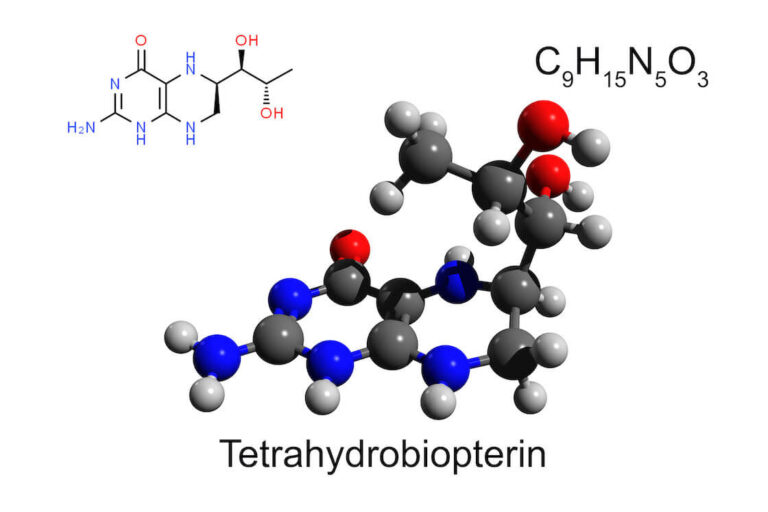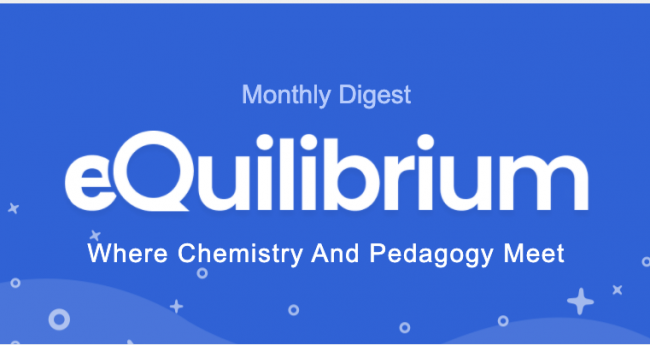Issue #1
Welcome to the first edition of our monthly digest Equilibrium!
We aim to highlight pertinent chemistry teaching strategies that may inspire you to try new ideas in your classroom! We hope this serves as a valuable resource for your professional development.

Justin Weinberg
Co-founder & CEO
Sign up to receive this monthly newsletter
In this issue of Equilibrium:
- Want your students to succeed? Have them fail productively first
- Multiple representations in chemistry and how students interpret them
- Using cognition theories for designing meaningful chemistry assessments
- Mathematical storytelling expands understanding
- Practical suggestions for teaching energy concept

Want your students to succeed? Have them fail productively first
If you want students to understand the material, let them struggle with it a little. The researchers from ETH Zurich have looked at the educational research from the last 15 years and concluded that productive failure increases the success rate by 20 percent. “Practice before learning the theory is nearly twice as efficient as receiving a year of instruction from an outstanding teacher,” explains one of the authors of the study, ETH professor Manu Kapur.
But what does it mean to fail productively?
It doesn’t mean letting students self-educate. Instead, Dr. Kapur suggests a four-step process:
- Introduce a problem to students
- Allow students to self-assess and become aware of what they know and what they don’t
- Let them wrestle with it a little to ignite students’ curiosity so that they want to solve it
- Demonstrate how to apply the new concept to solve the given problem and explain why the students’ solutions missed the target.
This method is particularly beneficial when students have some background knowledge of the material needed to solve the problem but still lack the proficiency required to solve it unless they are taught the new concepts.

Multiple representations in chemistry and how students interpret them
Do you have a favorite representation of a covalent bond? Perhaps it is the Lewis structure, or the ball-stick model, or the space-filling model. It turns out that different representations affect how students understand bond length, intermolecular forces, and polarity. A study published by the chemical education researchers from the University of South Florida in the Royal Society of Chemistry journal demonstrates how each chemical representation helps or hinders students’ understanding of certain chemical concepts.
They tested over 1,000 students on their perception and use of various models, and found that students appear to be successful when they develop representational competence early on, such as being able to focus on features of a model and using those features effectively in their explanations of the chemical phenomenon. Instruction and assessment may benefit by explicitly calling attention to certain benefits and limitations of each model. For example, Lewis structures prompted 94% correct responses about relative bond lengths for S and O in SO2, but a space-filling model produced the most mistakes about length of the bonds because students associated the size of the atom with the bond length. However, the same space-filling model was the most useful for eliciting correct responses about polarity.
The study suggests that deliberately pointing pros and cons of each model can facilitate students’ understanding of complex phenomena while building upon rudimentary concepts of atoms and molecules.
Instructors can effectively bridge knowledge gaps for their students by using various visualization tools. There is no shortage of these tools available to instructors, from traditional textbook diagrams and physical model kits, to sophisticated simulations. In particular, algorithm-driven visualizers are a cut above the rest, having the capacity to automate the process and provoke student curiosity. Aktiv Chemistry‘s platform is one such example that enables students to draw Lewis structures and visualize them in an intuitive interface, receiving real-time feedback and guidance as they progress.

Using cognition theories for designing meaningful chemistry assessments
As much as we all would like to have students in our courses who are eager to learn and understand chemistry, sometimes we have to face the reality that many of them are in our classes because they need to fulfill general education requirements. Thus, the authors of the study published in the Israel Journal of Chemistry suggest several assessment techniques that might not just validate students’ knowledge but also engage them in making predictions, modeling their thinking and providing rationale for the answers.
Practical takeaways:
- Incorporate more questions that allow students to actively work with the material rather than simply memorize it. Explicitly ask students to connect a phenomenon to the concept they learned in class and to provide a rationale for their answer. In addition, modeling their thinking through 3D models or drawings proved to be an effective way of engaging students.
- Students will allocate effort to those tasks for which there are points assigned. In other words, if we want students to use their knowledge of chemistry to come up with hypotheses, make predictions, and explain phenomena, we need to assign points for such activities.
Mathematical storytelling expands understanding
Every chemistry teacher knows that students who are well versed in math do much better in chemistry classes than those who are not. However, how we define “doing better” matters. Occasionally we get students who can solve every problem, but if you dig deeper, you will see that they don’t understand the physical meaning behind the solution. Such students treat chemistry as abstract math and learn to arrive at the correct answer without really understanding the phenomena. How do we engage them and elicit true comprehension? The researchers from Purdue University and Michigan State University believe that we can do it through mathematical storytelling. They discovered that what helps students connect math and chemistry is the intentional integration and explicit explanation of symbolic (equations) and graphical forms during instruction. They also suggested engaging students in collaborative problem-solving sessions to help students verbalize their reasoning.
Practical suggestions for teaching energy concept
Energy is an abstract idea that physicists are still wrestling to understand. No wonder that explaining to science students what chemical energy is can be challenging. The way we talk about energy greatly depends on the discipline and context, and students internalize the meaning of the word energy way before they get to our science classes. Even after we teach them about kinetic and potential energy, heat, entropy, and activation barrier, they still struggle with relating their sparse understanding of energy in general to the concept of chemical energy in particular.
Several studies support what we all know already – students have difficulty understanding fundamental principles of thermodynamics. Even students who successfully complete the P-chem course are frequently unable to correctly interpret the mathematical expressions for work, heat, and the first law of thermodynamics. Another research study in physics classes also suggested that most students were confused about concepts of heat, work, and internal energy because they all have the same units.
For general chemistry students, the most common confusion is about the energy of chemical bonds. A paper published in the Life Sciences Education journal revealed that students often adhere to the mistaken belief that energy is released during bond breaking. They presume that energy is stored in chemical bonds and then released when these bonds break, rather than understanding that energy is released when more stable bonds are formed.
So what can we do to address these misconceptions about energy? Here are some of the practical suggestions:
- Discuss potential and kinetic energy not just in terms of “an object falling on the ground,” but in terms of distance between two objects and their behavior in the energy fields (electric, gravitational and magnetic).
- Explain energy at the microscopic scale through the motion of particles and then connect it to the macroscopic scale.
- Explicitly teach how to accurately interpret the physical meaning of equations and units commonly used in thermodynamics.
- Make explicit connections between definitions of energy in physics, biology, and chemistry (and everyday life, for that matter). For example, in chemistry, we often tell students that if the chemical bonds of products are stronger than the reactants, then energy is released in the form of heat. But in biology, the released energy is often coupled with other thermodynamically unfavorable biochemical reactions and cannot be thought of as heat.
- Use peer review rubric for assignments where students can comment on each other’s written explanations about complex concepts.
What did you think of the newsletter?






